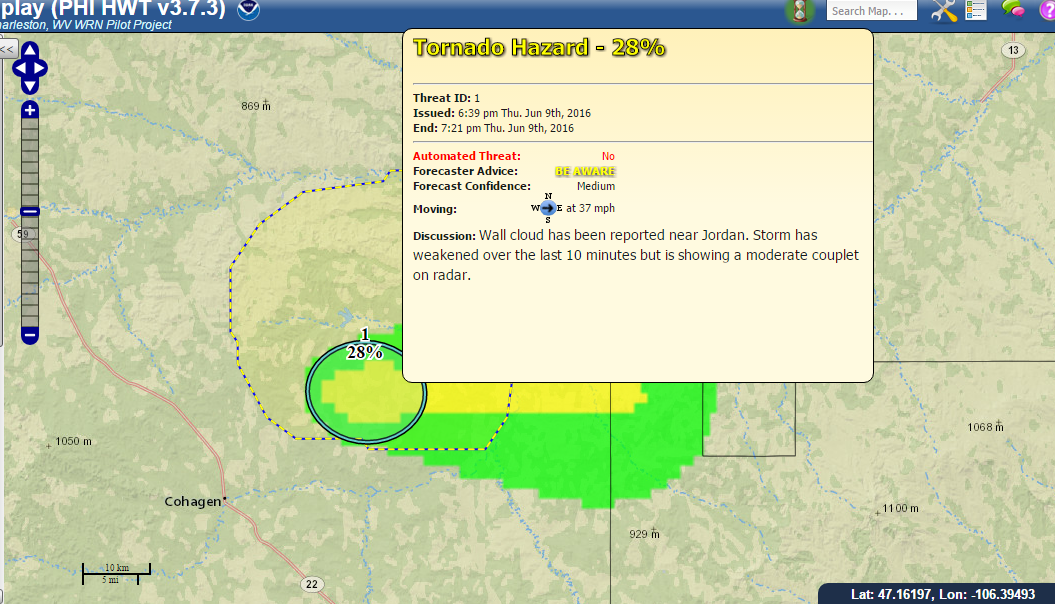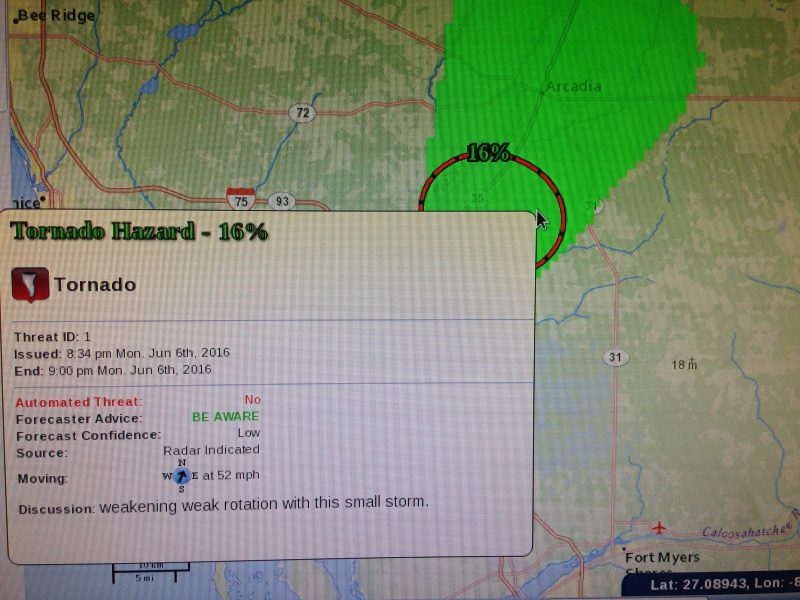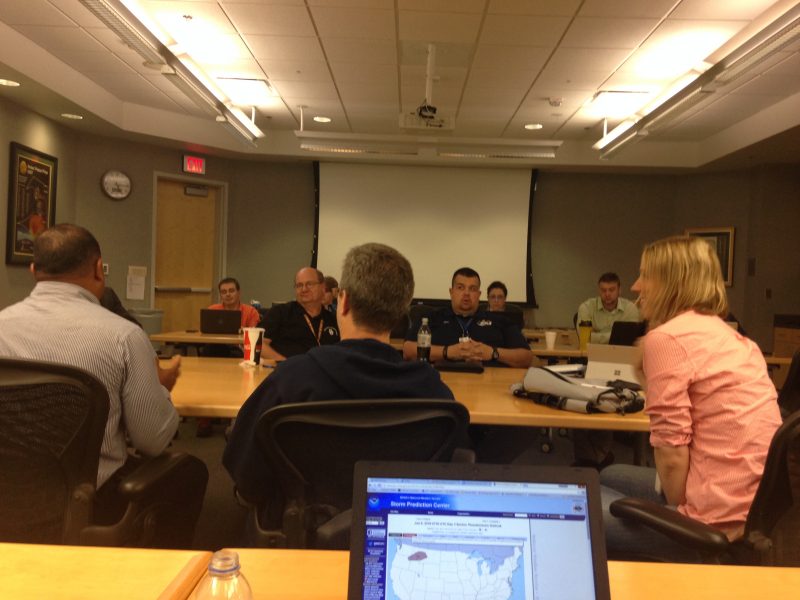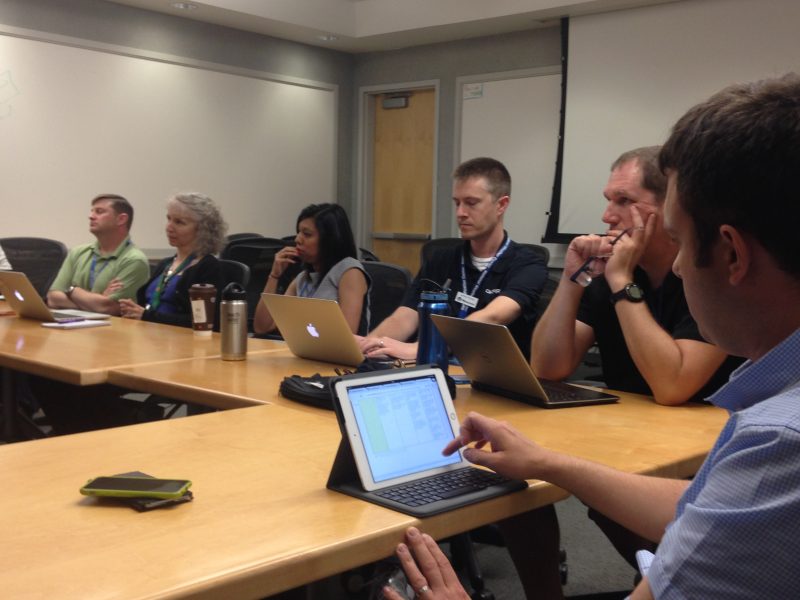As the final week of the PHI Prototype experiment wrapped up, the weather pattern become favorable for active severe weather over the northern Rockies/Plains regions. This enabled our project to center real time operations over parts of northern Idaho and Montana, focusing on the WFO Missoula area on Wednesday and the WFO Glasgow area on Thursday. Wednesday evening’s primary severe weather threat was large hail, and hence forecaster and the EM/media groups focused on producing and using PHI for severe storms and lightning. Along with using product streams like MRMS, a key tool PHI HWT forecasters utilize in analysis and producing PHI is CIMSS ProbSevere. ProbSevere provides the initial probabilistic values for severe weather and lightning for storm objects – forecasters can then adjust the algorithm values when creating their PHI plumes.
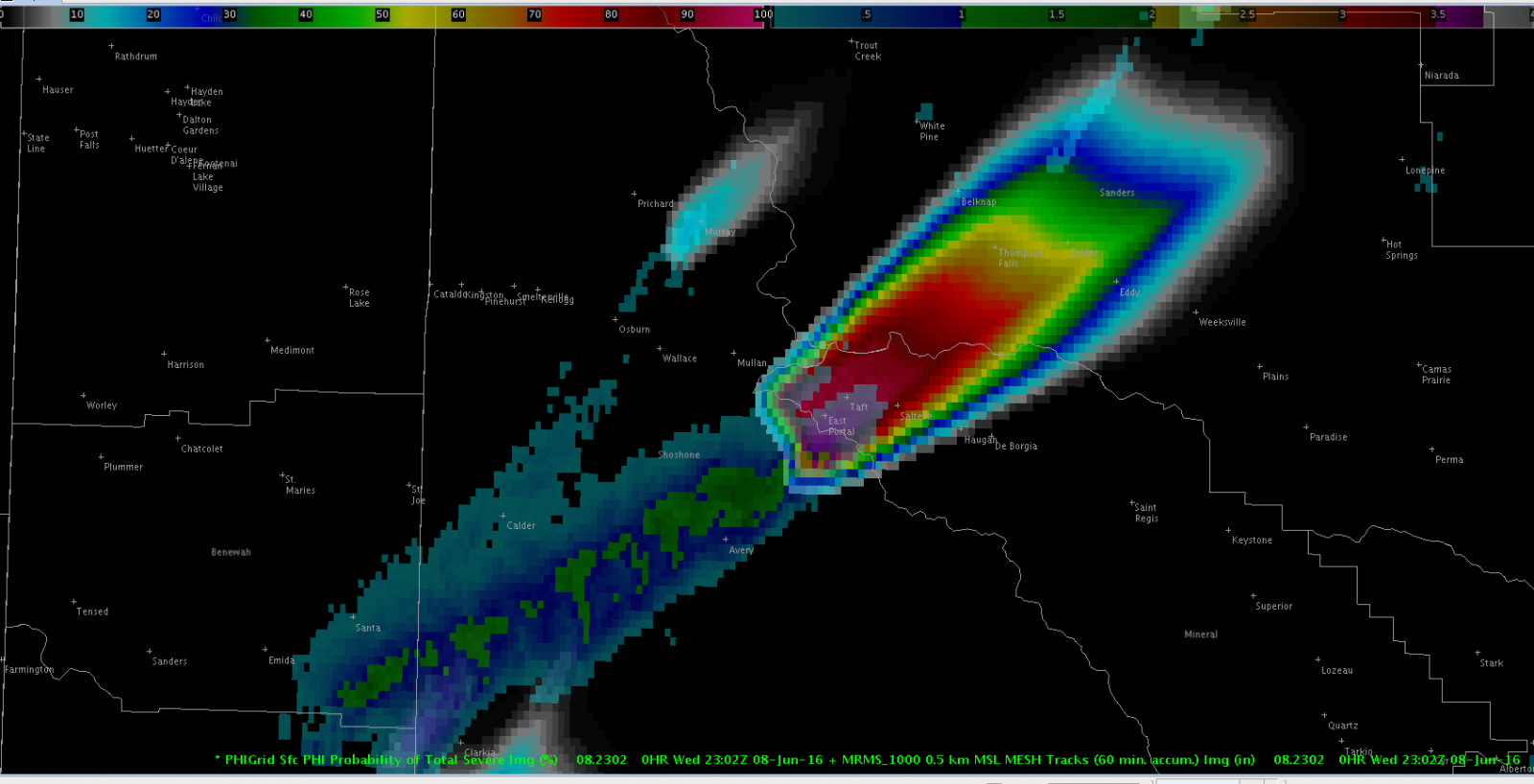
On Thursday evening, supercells moved across parts of central and eastern Montana producing damaging winds and large hail. While conditions were not overly favorable for tornadoes, one particular supercell near Jordan, MT had a persistent wall cloud along with some reports of funnel clouds. Along with monitoring the typical severe weather data, HWT forecasters also were able to see realtime video and pictures from storm chasers in the region. This data was utilized to produce PHI for tornado potential, with most of the PHI objects giving information about lower probabilities than might typically be associated with tornado warning situations. The forecaster and EM/media groups then discussed how this probabilistic information might be utilized to help improve decision making and provision of severe weather information for the public.
